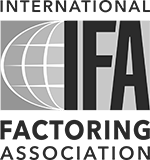International expansion: Is your company ready? (Part three)

In part one of this series, we explored the pressures that cause us to consider international expansion for our companies. We also discussed the importance of market research surrounding cultural differences and structure (distributor, joint venture, wholly owned subsidiary). In part two, I shared lessons learned over 30 years as a senior executive running international operations for Fortune 500 companies.
In part three, the last of this series, we will focus on international finance, logistics, labor and treasury functions.
International finance often plays a decisive role in determining whether you should go with an arm’s-length distribution structure or take a controlling interest in your international operations. Considerations such as protecting intellectual property, competitive advantages or service-level consistency when serving major home-market customers’ foreign subsidiaries are legitimate reasons to take a controlling interest in your operations outside of the home market.
However, these concerns may be mitigated sufficiently by selecting the right distribution partner, as illustrated in part one of this series. The right distribution partner worldwide, or in a particular country, would allow your company to minimize the use of its own capital while taking advantage of the opportunity to expand outside of its home market. In an earlier article titled “Why company leaders need to think like outside investors,” I demonstrated why return on investment should be optimized even if gross margin is negatively affected. This is doubly true when dealing with foreign markets. When foreign markets are targeted for expansion, consideration should be given to the possibility of future restrictions on repatriation of profits and barriers that favor local operators. Transfer pricing between entities that are owned by the same entity can be subject to scrutiny by authorities.
Be prepared to face currency exchange rate risk. If you choose to invest in a country other than your home country and the exchange rate there devalues against the home country currency, not only will your equity in that country be worth less, but your product will also be less competitive against locally made products. Borrowing in the local currency may be a good strategy; however, your local entity in the foreign country may not have sufficient borrowing power to cover the amount needed without a guarantee from the parent company.
Here’s a tip. In the event that your company operates different product lines independently in the home market, when expanding internationally it is best to combine them into a single entity with a shared treasury function in each country. This way they can borrow from each other, present a stronger balance sheet to financial institutions and perhaps gain tax advantages. Such a combination also affords the opportunity to hire seasoned, savvy local management that will add value and complement the expertise of the product people you send out from your headquarters.
Supply chain lead times can increase costs for destinations that are on lanes that are served less frequently or involve multimodal transport. Costs can also increase through constant delays related to clearing customs. Be sure that these issues are clearly identified when you’re determining which markets to target.
Affordable and abundant labor may be one of the attractions for expanding internationally. However, the rate paid per hour may be misleading. Will the savings in labor costs make up for the added cost of materials, logistics and tariffs? What are the real labor costs when productivity, benefits, ability to hire and fire, training, and government regulations are included?
In my experience working at Xerox in the 1970s and ’80s, the company approached Latin America with a realistic human resource strategy by setting up training centers in key countries around the region. That allowed them to plug the gaps in technical, sales and management training. Among the benefits Xerox accrued were reduced spending on expats, attraction and retention of a highly motivated workforce, and quality of work standards that met or exceeded the levels achieved in Europe and North America. An added benefit was a great understanding of the developing country markets.
It has been a pleasure to share the lessons learned during the more than 35 years that I managed operations outside of my home market. Please contact me if you would like to discuss any aspect of international expansion. Let me leave you with the following bullet points that were the basis for this three-part series:
- Buyers in each market exhibit different buying habits, even if they speak the same language that is spoken in your home market. Local knowledge is required.
- Conduct market selection research that emphasizes culture, human resources, government regulation, financing, logistics and aspects that may be barriers to entry, in addition to the more obvious product-related research.
- The decision to invest in a wholly owned subsidiary or a joint venture, or to name a distributor, requires deep research and participation by all involved in the business.





